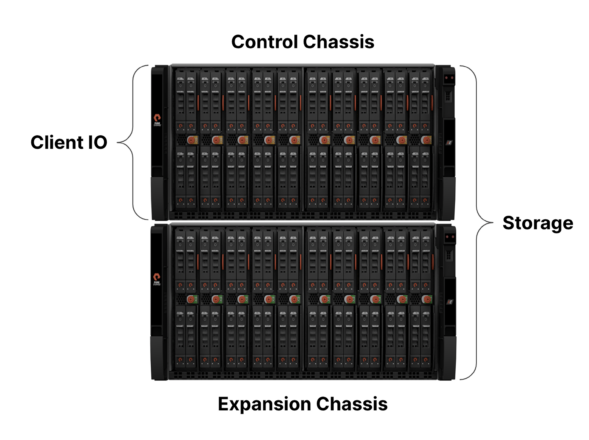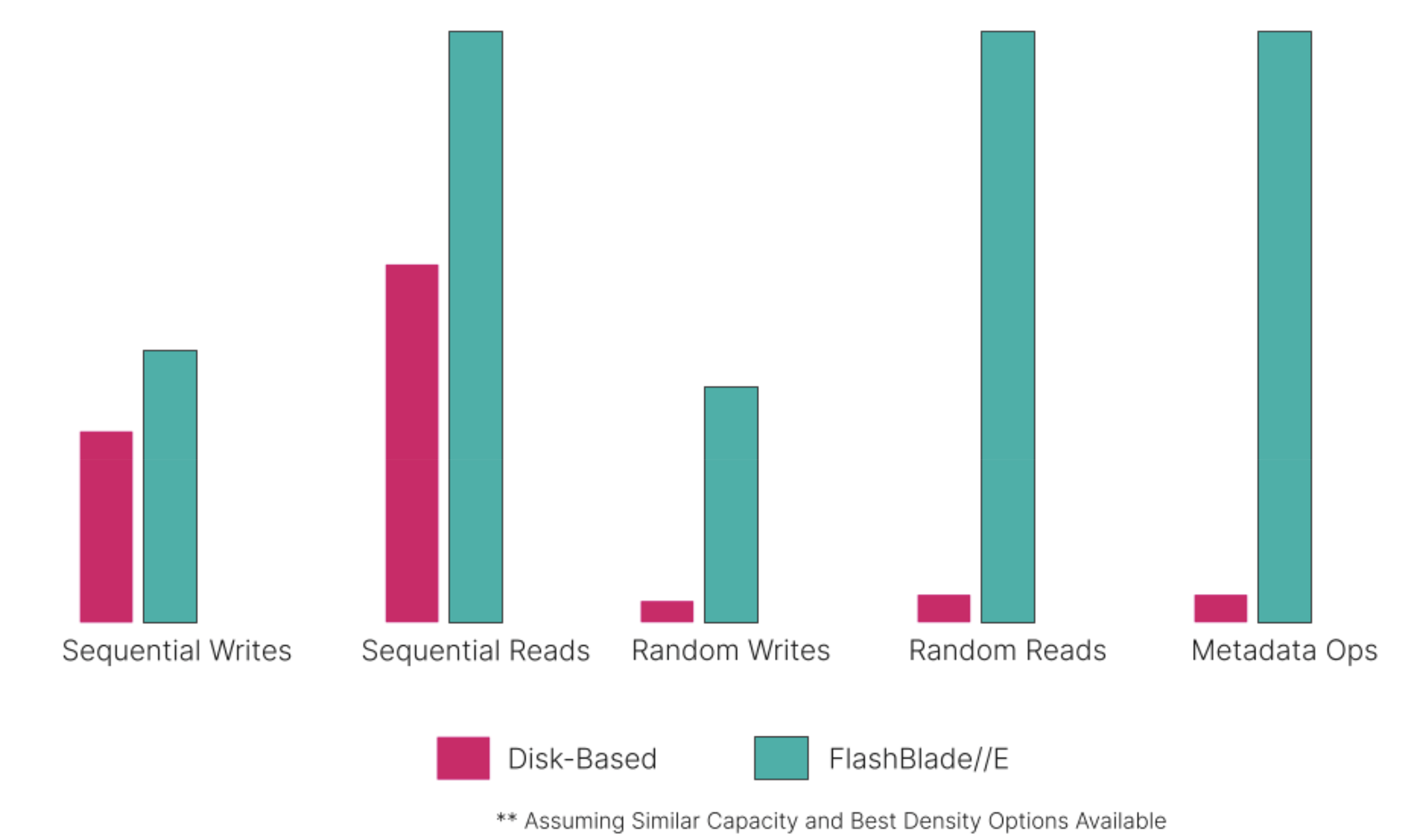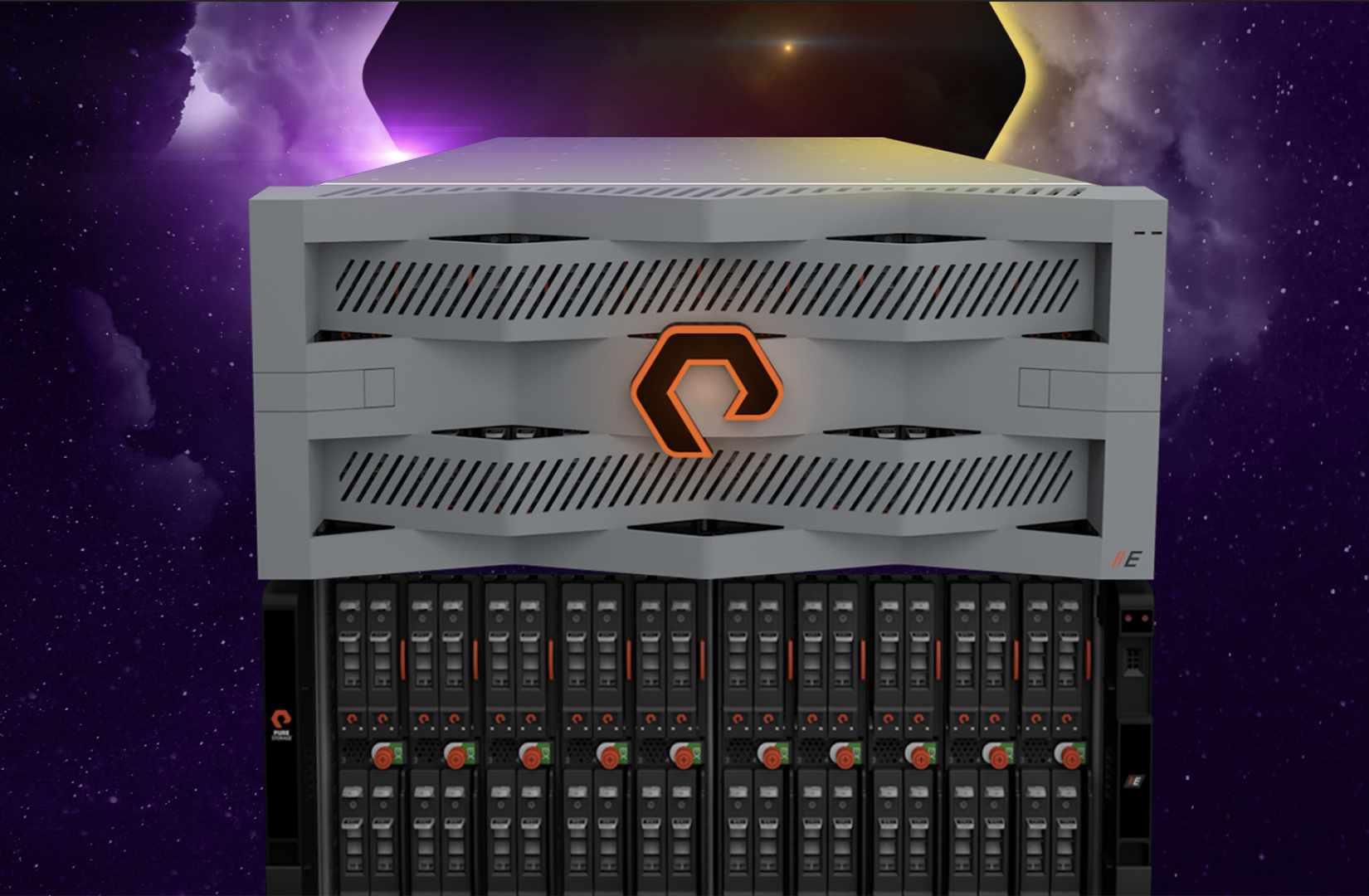From the beginning, Pure Storage’s mission has been to accelerate the adoption of flash, make hard drive technology obsolete, and lead the transition to the all-flash data center. Our belief is that this transformation is inevitable: The economic, technology, and environmental advantages would eventually become insurmountable, and that one day in the not-too-distant future, we’ll see a role reversal where flash storage would not need justification, but using older spinning rust would.
Earlier this year, I talked about how the disk/flash crossover event is closer than most people think. What I couldn’t talk about yet was exactly how Pure Storage was going to cross that chasm first: with the launch of our newest product, FlashBlade//E™. With an acquisition cost similar to all-disk enterprise storage arrays, but with significantly better total cost of ownership, reliability, ease of use, and sustainability, FlashBlade//E is the first all-flash product that goes toe-to-toe with all-disk systems. It provides customers with the opportunity to reevaluate what workloads can economically be delivered on all-flash. In short: FlashBlade//E makes all-disk systems justify their continued existence.
Read how the all-flash data center is imminent.

How is this possible? To tell the story of FlashBlade//E, we need to rewind the clock back to the middle of last year when we launched our next-generation unified fast file and object (UFFO) platform, FlashBlade//S™. FlashBlade//S brought with it a new, modular architecture which decoupled performance and capacity, allowing for tremendous flexibility to target performance-oriented workloads of many different kinds: what we call multi-dimensional performance.


FlashBlade//S: Symmetrical Scale
But because FlashBlade//S is a platform focused on speed (as well as all the usual Pure goodness like simplicity, scalability, and sustainability), it was designed as a symmetrical platform. All blades have the same compute and storage resources that are added to a single pool of storage, which means performance scales roughly linearly as you increase blades. You can increase performance to capacity by upgrading blades from S200 to S500, for example, or you can add a drive pack which adds capacity, but in the end, the entire system is still arranged homogeneously.
FlashBlade//E: Asymmetrical Scale
One of FlashBlade//E’s key innovations is that it scales out asymmetrically. While flash is not exactly slow compared to spinning disk, speed is not the primary goal of FlashBlade//E—efficiency is. Therefore, while FlashBlade//S leverages its homogeneity to provide predictable, linear performance scaling, FlashBlade//E introduces two different types of blades and chassis to more efficiently scale capacity and deliver the most economically compelling all-flash storage solution.
The first is the control chassis which is populated with EC blades. These blades perform all client-facing operations, in addition to providing storage resources to the cluster. The second is the expansion chassis, populated by EX blades which in contrast only add additional capacity to the cluster and do not perform any client-facing operations. This architecture improves both the economics and energy efficiency of the system.

What doesn’t change in this new architecture are the features and capabilities of the system. FlashBlade//E runs the same Purity//FB operating system as our other FlashBlade® platforms and remains interoperable with them in terms of management, APIs, replication, and so forth. FlashBlade//E still provides a unified file and object experience, one tailored for large, unstructured data repositories, which in the past would have been relegated to spinning media.
And while FlashBlade//E isn’t designed with performance as a key objective, that doesn’t mean it’s slow! Flash systems carry inherent advantages over spinning disk in multiple areas, as I discussed previously. With faster storage rebuild times, the lack of seek time, and small file and metadata performance, FlashBlade//E will leave disk-based systems—and even some hybrid ones—in the dust.

Figure 1: Comparison of read/write operations of disk-based systems vs. FlashBlade//E.
Today, FlashBlade//E gives customers more opportunities than ever to dramatically reduce their data center storage space, power, and cooling requirements. And with larger DirectFlash® Modules on the way, these benefits will only increase. We believe our pace of innovation will outrun alternative solutions, and our structural advantages, thanks to our “Better Science,” will make it very difficult to justify leaving 90% of bits on spinning disk in the future.
While FlashBlade//E is an evolution of what has come before, its effect will be revolutionary. We’re incredibly excited to be leading the way toward an all-flash future, and we hope you’re excited to team up with us.
To learn more about FlashBlade//E, check out the FlashBlade//E video and visit the FlashBlade//E page.








